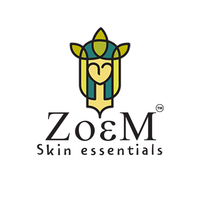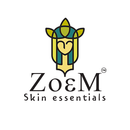Can Tea Tree Oil Help Get Rid of Acne?
Acne is a common skin problem that usually appears during adolescence, and most often manifests in the skin surface of the face, neck, arms, and back. There are several main causes of acne, such as increased sebum production by overactive oil glands, blockage of skin pores by retention hyperkeratosis, normal skin bacterial activities (Propionibacterium acnes and Staphylococcus aureus), and inflammation. Among these four reasons, the overactivation of P. acnes and S. aureus plays a critical role in acne formation and produces severe inflammatory responses. Therapeutic treatment of bacterium-induced acne is antibiotic . However, excessive use of antibiotics can cause antibiotic resistance that poses a serious threat to public health worldwide.
Is tea tree oil good for acne?
Alternative and complementary medicines have been extensively investigated in recent years. Essential oils, a type of plant secondary metabolites, have been evaluated for their bioactivities and potential therapeutic uses, such as anticancer, antimicrobial, and anti-inflammation. The potential synergy of essential oils with antibiotics was previously postulated, with the aim of alleviating the burden of antimicrobial resistance to conventional antimicrobials . Among the different types of essential oils, Australian tea tree oil (TTO), obtained from Melaleuca alternifolia L. (Myrtaceae) , is one of the best-known essential oils that is frequently used to treat skin, airway, oral, and other infections, or used as an antiseptic and disinfectant. Many reports describe the broad spectrum of TTO's antibacterial and antifungal activities .

Tea tree essential oil for acne
Tea tree oil (TTO), the essential oil of Melaleuca alternifolia L., is one of the most popular agents used in cosmetics. This study aimed to explore the correlations of components in TTO with its anti-acne activities and skin irritation. TTOs were isolated from the leaves (TTO-L), twigs, and branches of M. alternifolia by steam distillation, and the components analyzed by gas chromatography–mass spectrometry. Results showed that components of TTO-L satisfied the International Organization for Standardization (ISO) 4730 guidelines. TTO-L and its components, terpinen-4-ol, terpinolene, α-terpinene, and α-terpineol, had strong inhibitory activities against Propionibacterium acnes and Staphylococcus aureus.
Tea tree oil on face
Over-the-counter acne treatments containing tea tree oil from the plant Melaleuca alternifolia are widely available, and evidence indicates that they are a common choice amongst those self-treating their acne- but be careful and always dilute. Never use it directly onto your skin.
In 1925, Penfold used phenol as a disinfectant standard to compare the antibacterial activity of the components of TTO and presented them as the Rideal-Walker (RW) coefficient. The RW coefficient was defined as a ratio of the antibacterial activity of a sample compared to the antibacterial activity of phenol. Terpinen-4-ol and α-terpineol presented the strongest antibacterial activities against P. acnes. On the other hand, terpinolene, α-terpinene, and α-pinene, minor components in TTO, also contributed strong antibacterial activities against S. aureus. In treating acne, anti-inflammation also plays a critical role. Terpinen-4-ol, the richest component in TTO, was also a potential anti-inflammatory component.Therefore, when TTO is used to treat acne, it not only inhibits microbial growth but also suppresses the inflammatory response.
Tea tree oil products significantly improve mild to moderate acne. The efficacy may be attributed to antimicrobial and anti-inflammatory activities.
Pure Australian Tea tree oil
Tea‐tree oil (an essential oil of the Australian native tree Melaleuca alter‐ nifolia) has long been regarded as a useful topical antiseptic agent in Australia and has been shown to have a variety of antimicrobial activities; however, only anecdotal evidence exists for its efficacy in the treatment of various skin conditions.
Pure Australian Tea Tree Oil is a proven anti-bacterial, anti-fungal, anti-viral, and anti-inflammatory. Applications include acne, wounds, Methicillin-resistant Staphylococcus aureus (MRSA), dandruff, hand and body washes, insect bites and yeast infections. The aroma is warm, spicy, and aromatic; it has been described as ‘medicinal’.

Side effects of Tea tree oil
With increasing reports of the therapeutic properties of TTO, several toxicity review papers of TTO were published. TTO produces many local adverse reactions, such as contact allergy, irritation, and dermatitis in humans. However, most of the literature suggests that levels of allergy and skin irritation can be reduced by diluting TTO.
Do not ever inhale any essential oil! Strictly keep away from children
Any essential oil or Tea tree oil is known to be poisonous if swallowed. Tea tree oil should NOT be taken by mouth for any reason, even though some traditional uses include tea tree oil as a mouthwash, treatment for bad breath, and treatment of toothache and mouth ulcers. We do not recommend doing that.
How to use tea tree oil for acne?
In terms of its antibacterial efficacy, TTO-L significantly decreases acne formation via inhibiting the growth of acne-related bacteria, P. acnes and S. aureus, and reducing acne-caused inflammation. In addition, terpinen-4-ol, the major component in TTO-L, is also the major active component in its antibacterial efficacy, while minor components in TTO contributed to its efficacy as well. A common suggestion is that TTO be used at less than 2% in cosmetics is more suitable and safer for treating acne.
How to apply tea tree oil on face?
The use of a gel and face wash containing Australian tea tree oil can significantly reduce numbers of acne lesions and is well tolerated by acne prone skin.
Mix 1% to a moisturizing carrier oil, like coconut oil, olive oil, or avocado oil.
NOTE - DO NOT USE Teat Tree Oil DIRECTLY ON SKIN. ALWAYS READ THE LABEL INSTRUCTIONS & DILUTE . IN GENERAL 0.5% Tea Tree Oil AND 99.5% CARRIER OIL IS SAFE TO USE.
Can you use TTO for dandruff?
TTO with 5% concentration in shampoos is effective for reducing dandruff.
Happy Skin!
Vibhuti


Leave a comment